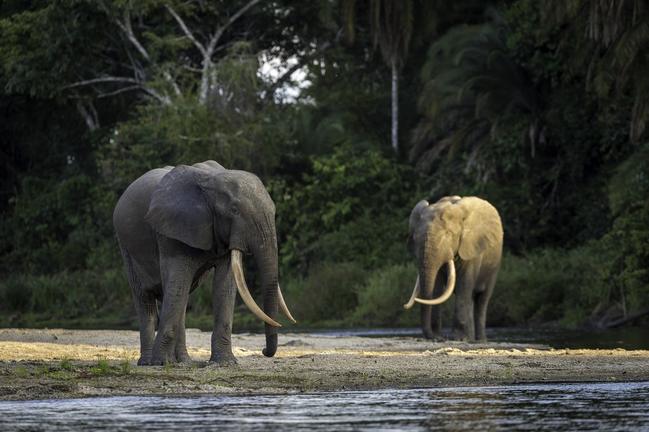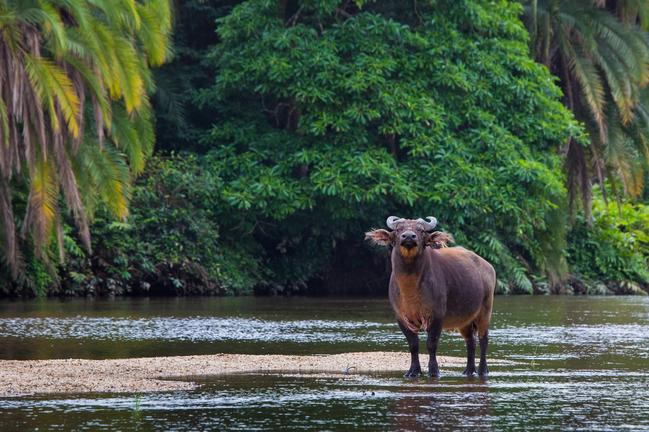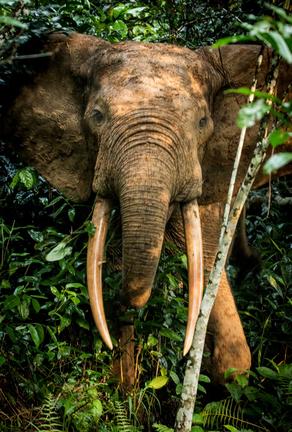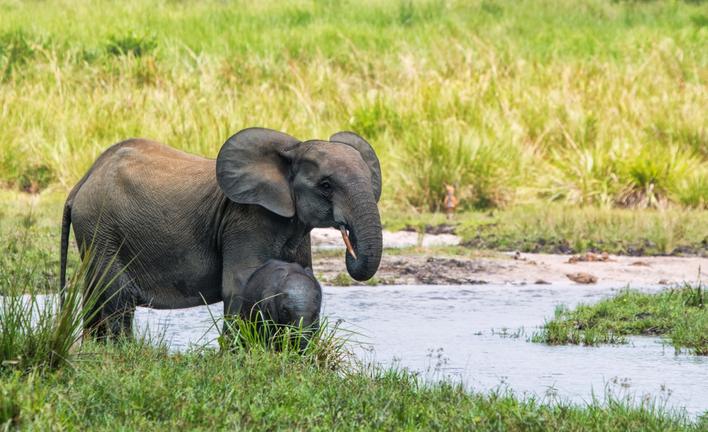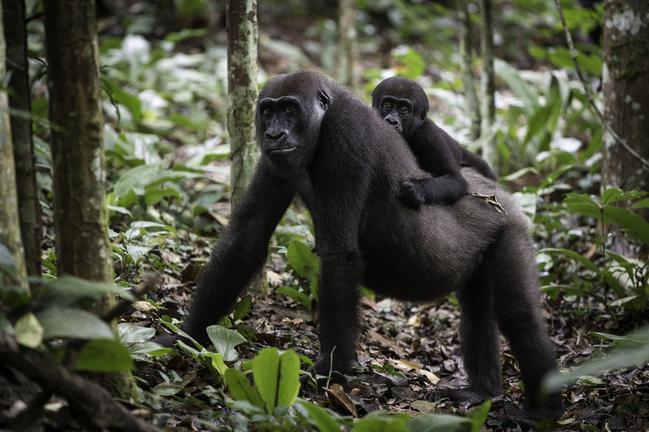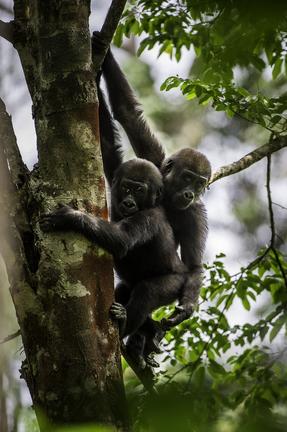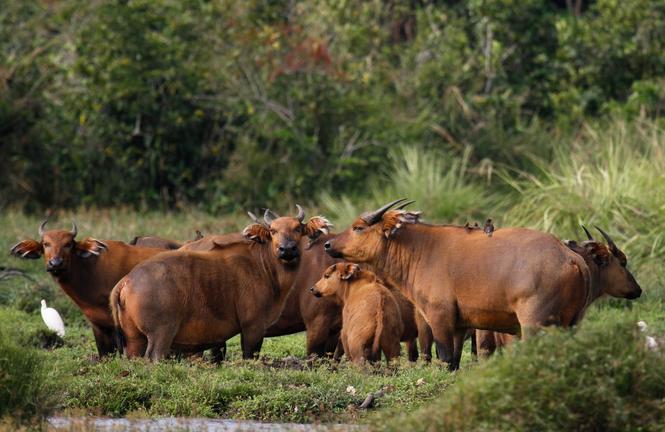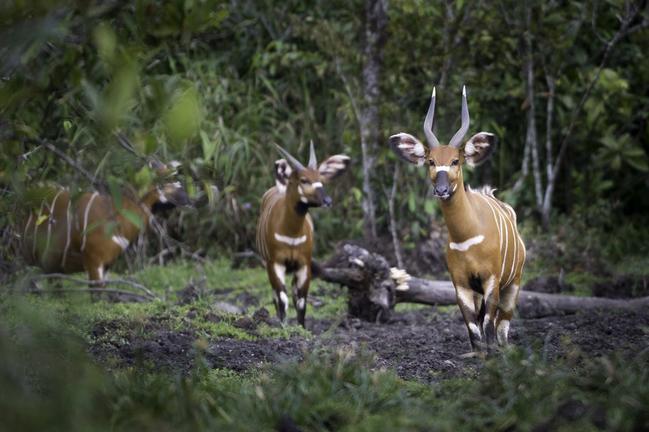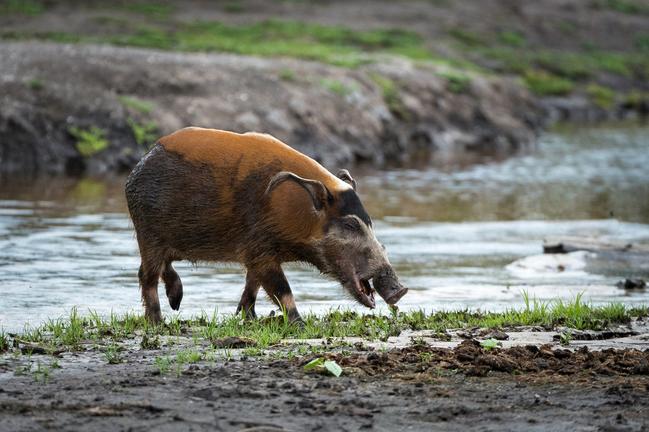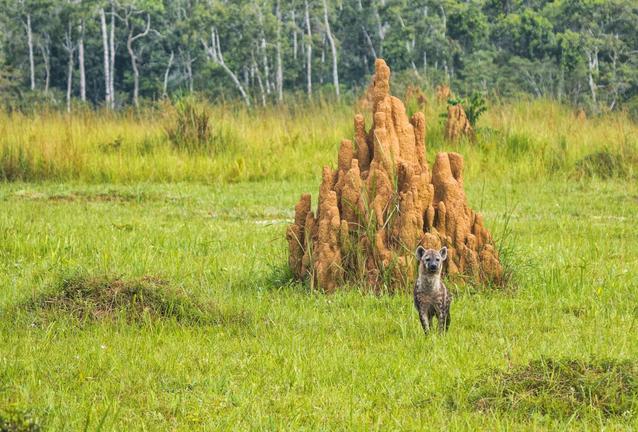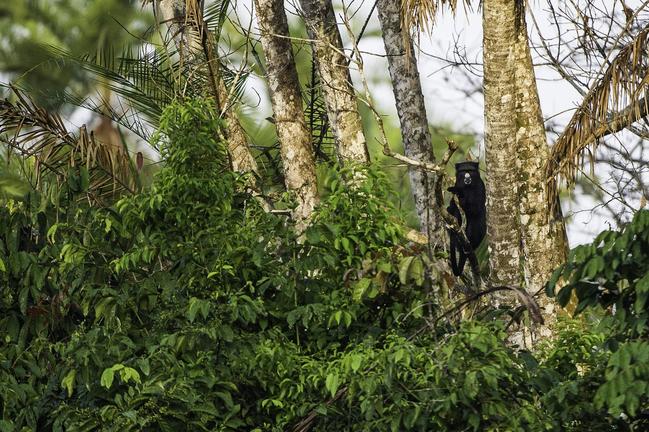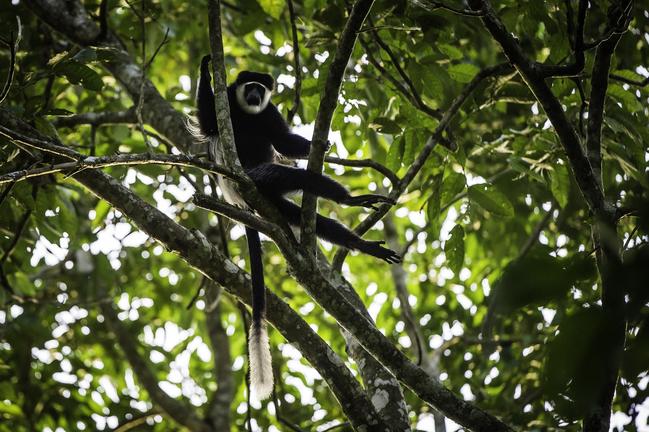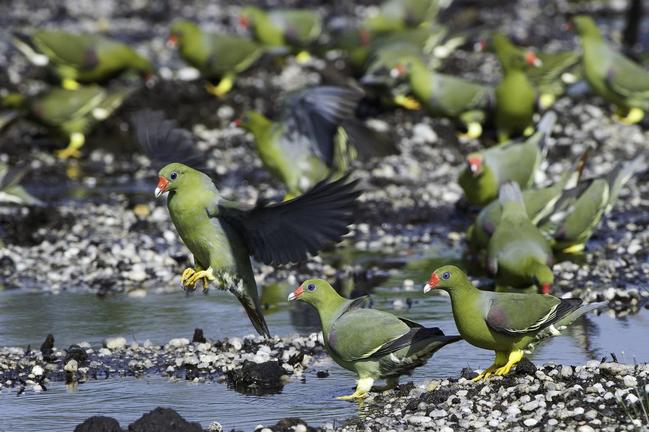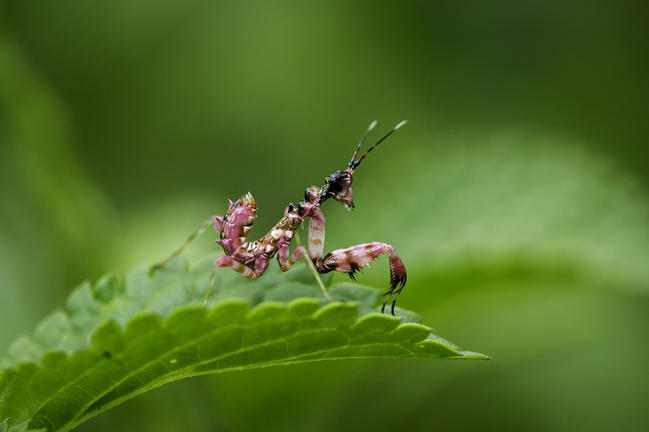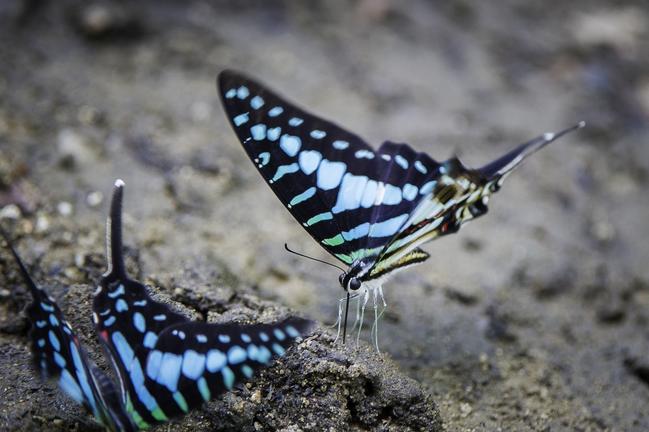Odzala-Kokoua National Park (PNOK) in north- western Congo is a vast green wilderness and one of Africa’s oldest national parks. It covers some 13 600 square kilometres (1.360 million hectares) of pristine rainforest and is an integral part of both the Congo Basin and the TRIDOM transfrontier park system overlapping Gabon, Congo and Cameroon.
Covered in forests, rivers, marshes and swamps, the Park is blessed with some 1 500 mm of rain annually, which falls mainly during the two wet seasons. Permanent rivers are a primary feature of Odzala- Kokoua, with the Lekoli and Kokoua rivers owing into the Park’s major channel, the Mambili. In some places, the Mambili is up to 100 metres wide between densely forested banks; it then via the Likoula ows into the great Congo River.
The north of the Park has dense forest covering many steep-sloped hills. In the west, a major escarpment runs roughly north-south from which the altitude drops 350 metres into a low swampy forest towards neighbouring Gabon. The southern part of the Park is characterised by pockets of savannah dotted with forest islands, bisected by the rivers and their associated gallery forests.
A major feature is the occurrence of “bais” or salines. These are swampy, grassy clearings in the otherwise dense forest that forest wildlife visit on a regular basis in order to drink, feed on sedges and grasses, and obtain minerals and salts.
This vast and truly wild region, with its wide range of landscapes and habitat, is home to an incredible diversity of life. Forest Elephant, Forest Buffalo, Leopard, Bongo, Giant Forest Hog and Hippopotamus live alongside the greatest density of Western Lowland Gorilla in Africa, the highest numbers of Chimpanzee yet recorded for any central African forest block, and a further nine diurnal and ve nocturnal primates.
Clouds of spectacular butter ies are characteristic of the region, whilst close to 440 bird species have been recorded here. The trees are spectacular: ancient giants well over 50 metres tall emerge from the canopy, delicate orchids cling to the branches and the forest oor is littered with an incredible array of pods, fruits, owers and fungi.
PROTECTING THE WESTERN LOWLAND GORILLAS
The IUCN, the International Union for Conservation of Nature, has classi ed the Western Lowland Gorilla as a critically endangered species. Our relatives are in great danger. The worst case scenario is as follows: Within the next three generations up to 80% of the entire population will disappear. Hence it is all the more important for Odzala to remain a safe place for the animals living there.
In the 1980s, a census of the gorilla populations in equatorial Africa was thought to be 100,000. Researchers later adjusted the gure to less than half because of poaching and diseases. Surveys conducted by the Wildlife Conservation Society in 2006 and 2007 found about 125,000 previously unreported gorillas have been living in the remote forests in northern Republic of the Congo.
However, gorillas remain vulnerable to Ebola, deforestation, and poaching. Fortunately, the government of the Republic of the Congo has put in place conservation efforts to conserve different species such as chimpanzees, forest elephants, and western gorillas from poaching and deforestation. These efforts would allow these species to bene t from vegetation and ecologically important resources, that are protected in Congo’s national parks like Odzala-Kokoua.
